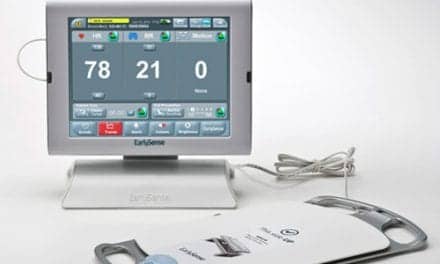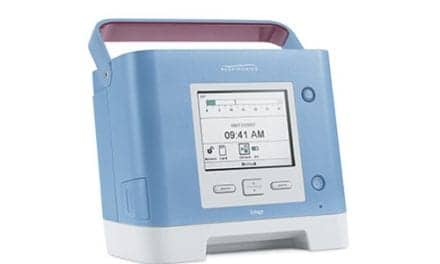Medtronic plc received US FDA 510(k) clearance for its RespArray patient monitor, designed for procedural sedation and medical-surgical units.
RespArray is engineered with market leading technologies, Nellcor pulse oximetry and Microstream capnography, as well as electrocardiogram (ECG), noninvasive blood pressure (NiBP), and temperature monitoring. Medtronic is planning a limited market release in late Q4 2022 followed by a full market release in early 2023.
The Medtronic RespArray patient monitor — with Nellcor pulse oximetry and Microstream capnography — is designed with smart algorithms to help detect respiratory compromise early and reduce alarm fatigue. Microstream capnography reduces unnecessary nuisance alarms by 53%.2
Respiratory compromise, a decline in respiratory function, is a common cause of preventable harm and death.3,4 In medical-surgical units, patients on opioids — who are at high risk for respiratory compromise — are commonly only monitored with spot checking. With better continuous monitoring and response, 97% of postoperative opioid-induced respiratory depression is preventable.5 Implementing continuous monitoring of high-risk patients on opioids on medical-surgical units supports patient safety and may help save median-sized hospitals $535,000 annually.6
The Medtronic RespArray patient monitor also features simple connectivity and seamlessly integrates into the hospital’s EMR to improve workflow. For clinicians this means less time manually charting and more time to focus on what matters — caring for patients.
“Helping to keep patients safe is our top priority,” said Frank Chan, president of the Patient Monitoring business, which is part of the Medical Surgical Portfolio at Medtronic. “We engineered RespArray to expand access in procedural sedation and medical-surgical units to critical monitoring technologies that are always watching out for patients. These technologies can help clinicians detect respiratory compromise early so they can intervene fast.”
References
- Emergency Care Research Institute (ECRI). 2022 Top 10 Patient Safety Concerns. Special Report. March 2022.
- Internal test data on file.
- Buist M, Bernard S, Nguyen TV, Moore G, Anderson J. Association between clinically abnormal observations and subsequent in-hospital mortality: a prospective study. Resuscitation. 2004;62(2):137-141.
- Ochroch EA, Russell MW, Hanson WC, 3rd, et al. The impact of continuous pulse oximetry monitoring on intensive care unit admissions from a postsurgical care floor. Anesthesia and analgesia. 2006;102(3):868-875.
- Lee LA, Caplan RA, Stephens LS, et al. Postoperative opioid-induced respiratory depression: a closed claims analysis. Anesthesiology. 2015;122(3):659-665.
- Khanna A, Junquist C, Buhre W, Soto R, di Piazza F, Saager L. Modeling the Cost Savings of Continuous Pulse Oximetry and Capnography Monitoring of United States General Care Floor Patients Receiving Opioids Based on the PRODIGY Trial. Adv Ther. 2021 May 24:1–15. doi: 10.1007/s12325-021-01779-7.










